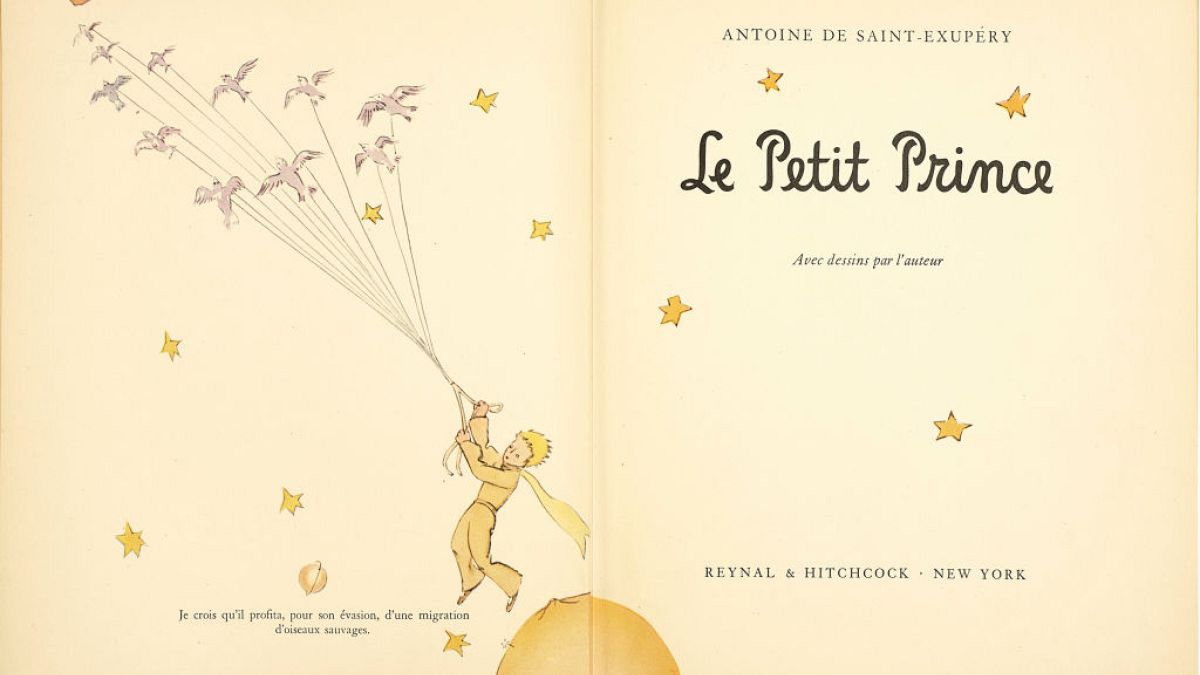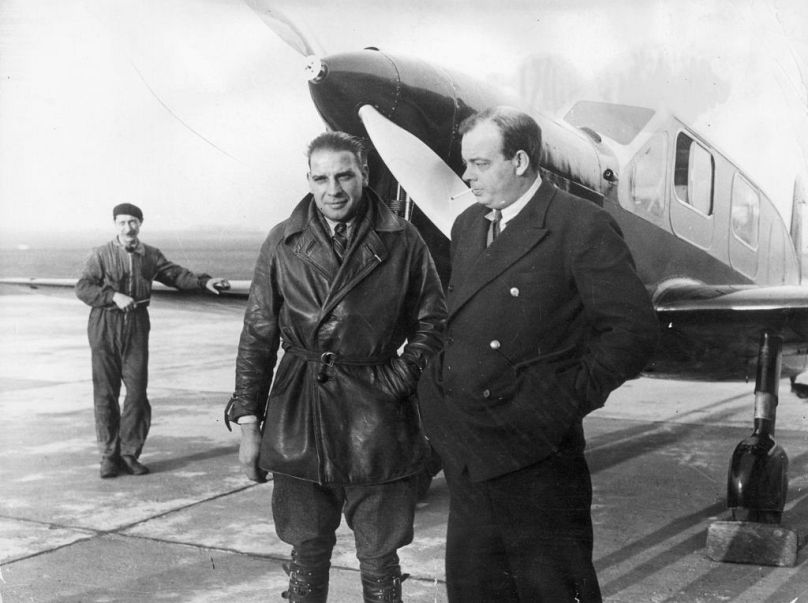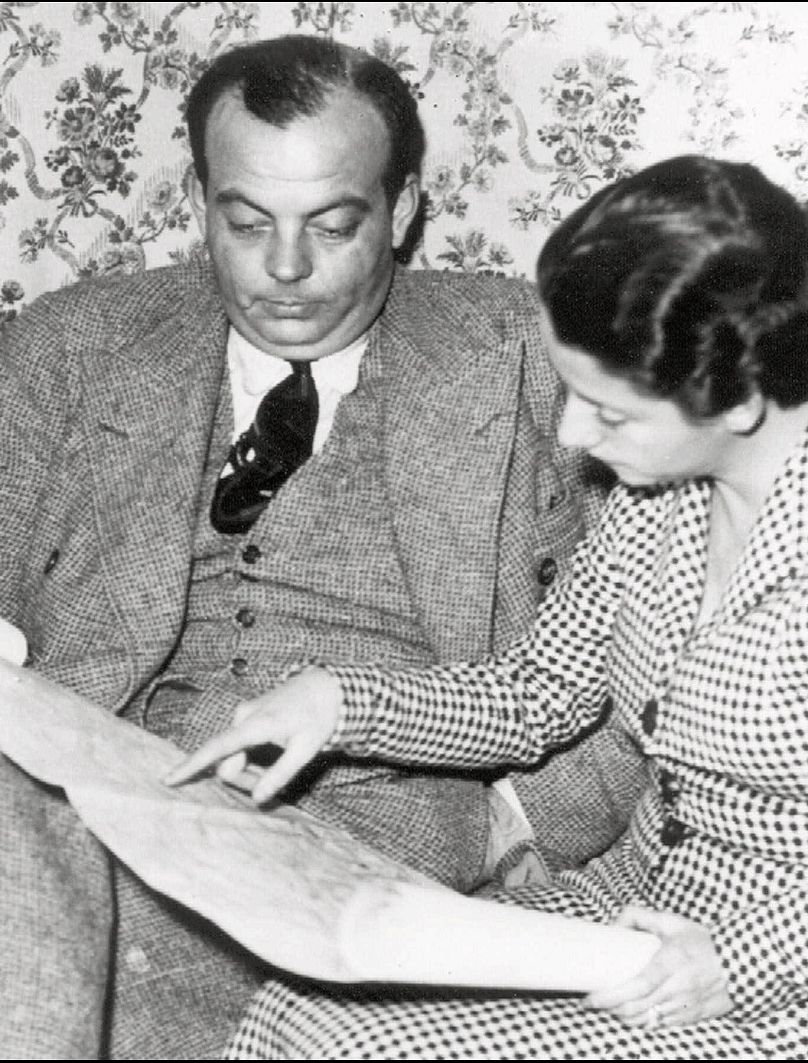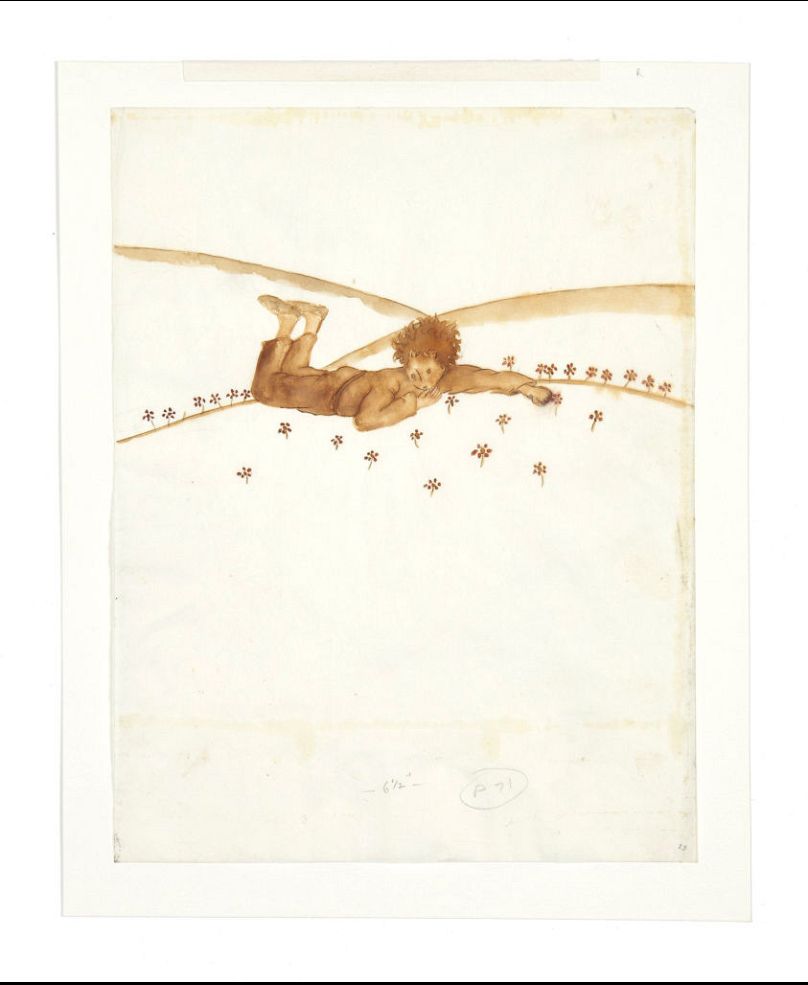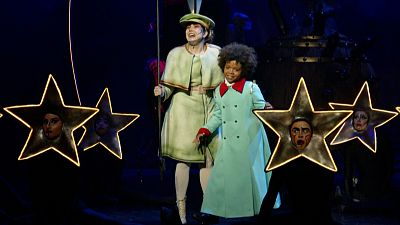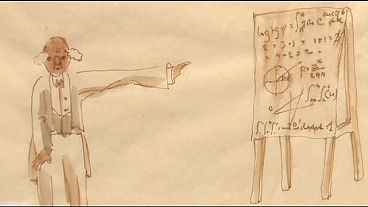As Antoine de Saint-Exupéry's iconic novella celebrates 80 years since its publication in April 1943, Euronews Culture dives into some facts you might not know about the world-famous work
'Le Petit Prince' - or 'The Little Prince' - is 80!
This month marks the anniversary of the publication of Antoine de Saint-Exupéry’s work, one of the most famous books of all time. It’s sold an estimated 140 million copies worldwide, spawned countless adaptations and been translated into an estimated 500 different languages and dialects - making it the second most translated work ever published - trailing only The Bible.
The iconic novella was first published in French and English in the United States by Reynal & Hitchcock in April 1943 and published in France after the liberation. Saint-Exupéry’s works had been banned by the Vichy Regime. Despite now being an octogenarian, the book is an evergreen favourite, following a young prince who travels around the universe and addresses themes of love, loneliness, friendship and loss.
To mark the 80th anniversary, Euronews Culture takes a look at five facts about 'Le Petit Prince' and its author that you might not know…
1. Antoine de Saint-Exupéry was far more familiar than most with plane crashes
In the beginning of the book, the narrator crashes his plane into the Sahara desert.
This was semi-autobiographical for Antoine de Saint-Exupéry, who certainly knew a thing or two about desert plane crashes. Before World War II and the publication of 'Le Petit Prince', Saint-Exupéry was celebrated as an aristocratic, successful commercial pilot, who had flown mail routes in Europe, Africa and South America.
Ahead of joining the French Air Force at the start of the war, in 1935 he attempted to break the record for the fastest trip between Paris and Saigon (now Ho Chi Minh City), crashing his plane in the Libyan desert. Both Saint-Exupéry and his mechanic-navigator André Prévot miraculously survived four days in the baking hot environment, suffering from intense dehydration and hallucinations, when they were rescued by a Bedouin on a camel who happened to be passing by.
Saint-Exupéry’s second plane crash of note would be his last. In the war, he flew reconnaissance missions and took off on 31 July 1944 from an airbase on Corsica, never to return. The author’s body was never recovered and there were no clues about his fate until 1998, when his silver identity bracelet was found by a fisherman off the coast of Marseille. The remains of his aircraft were found nearby by a diver in 2000 and it wasn’t until 2004 that the French government confirmed that the remnants belonged to Saint-Exupéry’s vessel, marking a tragic end to an extraordinary life.
2. Antoine de Saint-Exupéry's wife is thought to be the inspiration behind one of Le Petit Prince's most iconic characters
It is widely reported that Saint-Exupéry’s wife, Consuelo, likely inspired the character of the rose in 'Le Petit Prince'.
In the book, the rose is personified as beautiful and vain, proud and entitled but the Prince falls in love with her anyway, protects the rose, watering her and shielding her from the elements. He begins to feel taken advantage of by the rose and is put off by her arrogance, so decides to leave the planet to explore the universe.
Although the Prince encounters other roses on his travels, the character of the fox reminds him that his rose is uniquely special to him, explaining, "you become responsible, forever, for what you have tamed".
Saint-Exupéry and Consuelo had a volatile relationship, living apart for most of their married life, with Saint-Exupéry engaging in numerous extramarital affairs. However, Consuelo always remained his muse. She was born in El Salvador and, in the novel, the Prince’s home asteroid has three tiny volcanoes, most likely inspired by three volcanoes visible from Consuelo’s hometown of Armenia in the west of the country.
The theory of Consuelo being the inspiration for the rose in 'Le Petit Prince' is further strengthened by the title of her autobiography - which was published posthumously in 2000 - 'The Tale of the Rose'.
3. Saint-Exupéry both wrote and illustrated 'Le Petit Prince'
Saint-Exupéry drew all of 'Le Petit Prince'’s illustrations himself. He spent just over a year studying architecture, but didn’t consider himself an artist, although he was known to always be sketching figures on scraps of paper.
Saint-Exupéry was reported to have been drawing versions of the title character in the margins of manuscripts and letters for some time ahead of the publication. He did have to improvise on models for some of the characters as he didn’t have access to a sheep or a tiger. Instead, his own pet boxer was the basis of the tiger and his friend’s poodle was transformed into the illustrated sheep.
4. One of the main characters in 'Le Petit Prince' is never actually shown to the reader
The pilot - 'Le Petit Prince'’s narrator and one of the main characters - is never depicted in drawings in the book.
The Morgan Library and Museum in New York held an exhibition in 2014, showcasing a wide variety of Saint-Exupéry’s unpublished drawings, including one showing the narrator sleeping beside his plane. The Morgan’s curator of literary and historical manuscripts, Christine Nelson, explained: “We can only speculate about why Saint-Exupéry decided to remove that image, but he was very good at excising what was not essential to his story".
5. While there have been numerous adaptations of 'Le Petit Prince', we were denied a Orson Welles-Walt Disney version
In 1943, Orson Welles apparently spent half the night reading the story and immediately bought the film rights to it the next day.
Welles - already very well established for his film Citizen Kane - wanted to adapt the novella into a live action film with some animation, which would have meant he needed help from Walt Disney. Despite having a script in place, the pair reportedly clashed horribly at an initial meeting and it seems a collaboration would have been impossible. Walt Disney is said to have stormed out of the meeting, saying, “there’s only room in this project for one genius”.
However, there’s no shortage of other adaptations to get stuck into after you’ve finished the book - 'Le Petit Prince' has been turned into countless audio recordings, film, stage and television productions, board and video games, and even an anime series.
